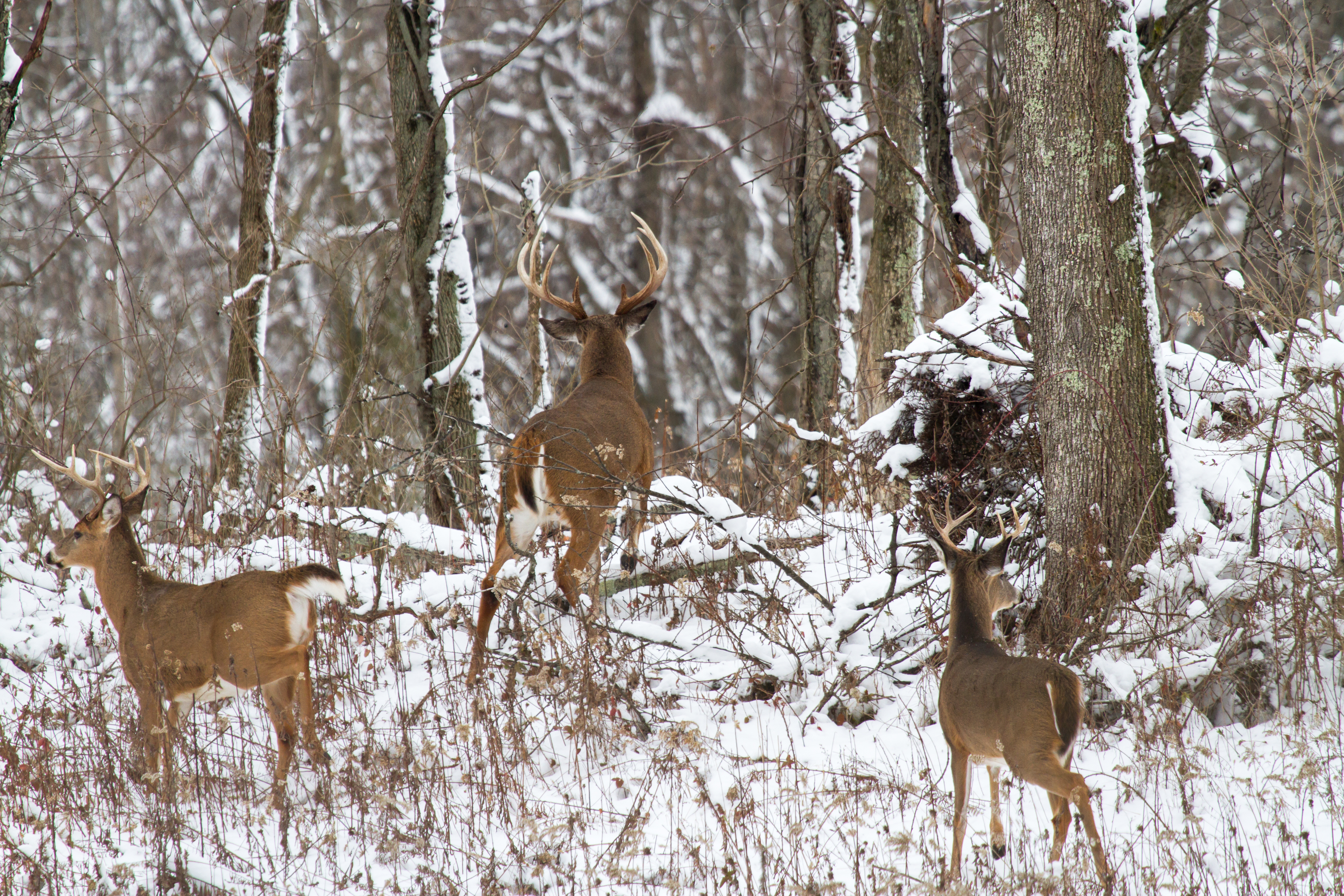BRYAN KNOWLES, Glacier Ridge and Homestead Park Manager
When the sun’s out, the sky’s a brilliant bright blue and the clouds are puffy white, there’s no better place to be than walking down a leaf-covered trail in one of your Metro Parks. And you won’t be alone. This time of year the forest is full of activity – it’s the rut (deer mating season).

During the rut, deer are most active at dawn and dusk. Bucks are usually cautious, but are less so during the rut. You may see them trotting through the woods or on the edge of a field. You might spot them with their noses to the ground, following the scent trail of a doe, or standing still with their noses held high, trying to determine the location of doe. This is also the time of year when you can get glimpses of bucks, fighting to be the top buck in an area. They lock antlers in shoving matches that are relatively harmless, even though they look like intense confrontations.
Scent plays an important role in deer communication. It establishes territory, identifies other deer and lets a buck know when a doe is receptive to being a mate. Bucks have several glands that produce oils that carry the scent. They use their antlers to rub bark off trees and then rub their foreheads on trees to release the scent. They also make circular rubs on the ground, scraped down to bare dirt and free of vegetation, leaving scent from glands between their toes. The buck then squats over these scrapes and urinates on its tarsal glands (located on the inside of the back legs at the knee), leaving scent in the soil as well.
The rut is a great time to observe deer and larger bucks, so grab your binoculars and head over to your favorite Metro Park.
